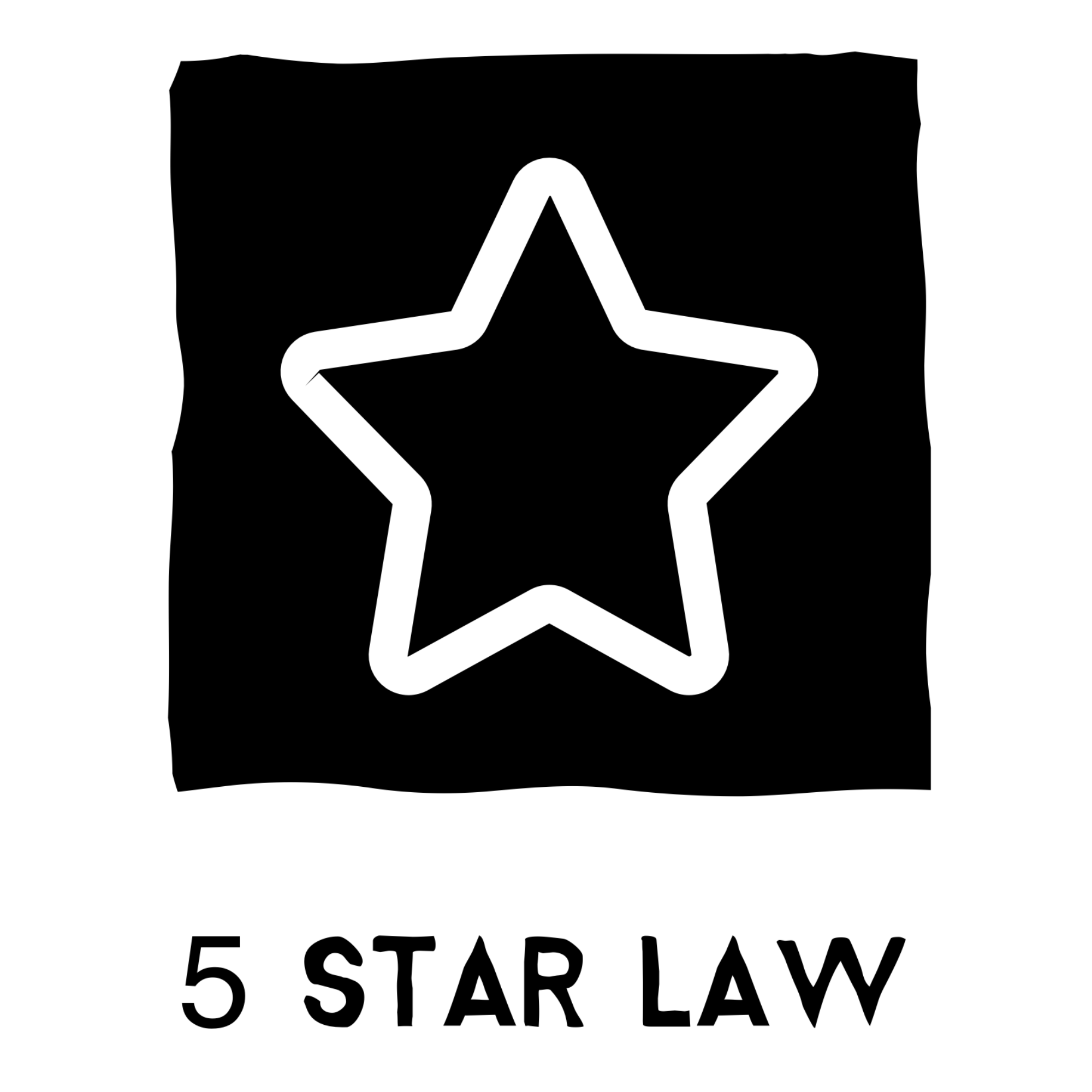Bankruptcy Law: Your Guide to Navigating Legal Processes
Over 500,000 Americans turn to bankruptcy law chapters each year as a lifeline and help out of financial distress. This staggering amount underscores the critical role that understanding the ins and outs of bankruptcy law plays in helping make informed decisions about one's economic future, for example, over the years. Navigating the complexities of bankruptcy can seem daunting, but it doesn't have to be a journey you take alone. With the right help, you may find that this period becomes pivotal in reshaping your financial life for years to come.
Whether you're grappling with mounting debts or considering bankruptcy as a fresh start, this post aims to help demystify the process, offering clear insights into how bankruptcy law works, its benefits, and potential pitfalls. It may also provide helpful tips and highlight how much debt can be discharged. By arming yourself with knowledge, you may help make choices that best align with your financial goals and pave the way toward economic recovery, even after years of bankruptcy.
Table Of Contents
Key Takeaways
- Bankruptcy may offer a fresh start for those overwhelmed by debt, but understanding the basics is crucial before making any decisions during this period of years.
- Different types of bankruptcy cater to various needs, such as Chapter 7 for liquidation and Chapter 13 for reorganization; knowing which type suits your situation is critical. The period for these processes may span years.
- Eligibility requirements may vary by bankruptcy type and year, and the filing process can be complex; seeking professional advice can help you navigate these steps more effectively.
- Both debtors and creditors may have specific rights during the bankruptcy process; being informed about these rights during this period can protect your interests for years.
- Certain debts cannot be discharged in bankruptcy, and exemptions may allow you to keep some assets; knowing these can influence your decision to file within a certain period or years.
- Exploring alternatives to bankruptcy, like debt consolidation or negotiation, might provide a less drastic solution to financial problems over the years.
Understanding Bankruptcy Basics
Legal Process
Bankruptcy is a legal procedure designed for debt relief. It aims to provide a fresh start to those who are bankrupt and overwhelmed by debt. The debtor often initiates this bankruptcy process, which may be imposed by court order for years. Its purpose is not only to aid the bankrupt debtor but also to ensure fair treatment of creditors.
Through bankruptcy, assets are evaluated and may be used to pay off debts. This ensures that all parties involved, whether bankrupt or not, are treated equally as possible under challenging circumstances.
Court Involvement
The involvement of courts in bankruptcy cases may guarantee that the process follows federal laws and regulations. Bankruptcy courts specifically handle these cases, operating under the United States Bankruptcy Code, and may operate under the Federal Rules of Bankruptcy Procedure.
These legal frameworks outline how cases, including bankrupt ones, should be managed from filing to discharge and may specify procedures for each step. They may play a crucial role in maintaining order and fairness throughout bankruptcy.
Insolvency Status
While bankruptcy is a well-known option for those facing insolvency, it's not the only status that may be available. Insolvency can lead to different processes, including bankruptcy, depending on various factors,y including the debtor's specific situation and jurisdiction, and may.
In some cases, alternatives like restructuring or negotiation with creditors may provide solutions without complete bankruptcy proceedings. However, these options, which may include bankrupt entities, still fall under the broader umbrella of insolvency law.
Global Aspects
Bankruptcy doesn't just affect individuals and businesses within one country; it may also impact those beyond its borders. It may have international dimensions, especially when dealing with bankrupt multinational corporations or debts owed across borders.
International aspects of bankruptcy involve understanding how different jurisdictions may handle insolvency and cooperating between countries in these matters. This complexity may add another layer to an already intricate legal field, potentially bankrupting those who navigate it.
Professional Guidance
While understanding Bankruptcy Basics may offer valuable insights into this complex area of law, it cannot replace professional advice. The intricacies of federal bankruptcy laws may require expert interpretation and application based on individual circumstances.
Consulting with professionals specializing in bankruptcy law ensures that individuals and entities may receive guidance tailored to their unique situations. This step is crucial for navigating the legal landscape effectively and may help you make informed decisions about debt relief options, including bankruptcy.

Types of Bankruptcy Explained
Chapter 7
Chapter 7 bankruptcy is a liquidation process designed for individuals or businesses that may be bankrupt and can't repay their debts. This type involves selling off assets to pay creditors. Not everyone may qualify for Chapter 7 bankruptcy, as it requires passing a means test.
It offers a fresh start for individuals who may be bankrupt by wiping out certain debts. Bankrupt businesses closing down may also use this to liquidate assets fairly among creditors. However, it might mean losing valuable property.
Chapter 11
Chapter 11 bankruptcy is about business reorganization. It allows bankrupt companies to keep operating while they work on repaying creditors under a court-approved plan. This type of bankruptcy is complex and often involves significant legal costs, potentially leading to bankruptcy.
Businesses can renegotiate terms with creditors to lower debt amounts and extend repayment periods, avoiding bankruptcy. It provides a lifeline for struggling, potentially bankrupt companies to become profitable again.
Chapter 13
Chapter 13 bankruptcy targets regular-income individuals wishing to keep their assets. They propose a repayment plan to settle bankrupt debts over three to five years. Unlike Chapter 7 bankruptcy, homeowners can avoid foreclosure and catch up on missed mortgage payments through their repayment plan.
It’s suitable for those with substantial secured debts who seek to reorganize finances without liquidating assets and are considering bankruptcy.
Specialized Types
Chapter 9
Chapter 9 bankruptcy is specifically for municipalities, such as cities or school districts. It helps them restructure debts while continuing essential services.
Chapter 12
Chapter 12 supports bankrupt family farmers and fishermen facing financial distress. It offers more favorable terms than other types, recognizing the unique challenges in the agriculture and fishing industries.
Chapter 15
Chapter 15 deals with international bankruptcy cases and facilitates cooperation between U.S. and foreign courts in cross-border bankrupt insolvency situations.
Eligibility and Filing Process
Income Levels
To file for Chapter 7 bankruptcy, individuals must pass a means test. This evaluates if their income is low enough to qualify or if they are bankrupt. If your income exceeds the state median for a similar household size, you may need to file for Chapter 13 instead.
Chapter 7 targets those who genuinely cannot pay back their debts. It considers your monthly income against your living expenses to determine eligibility.
Debt Limits
Chapter 13 bankruptcy comes with specific debt limits. Unsecured debts must be under $419,275, and secured debts under $1,257,850. These figures adjust periodically to reflect changes in the economy.
This chapter helps individuals with regular income create a plan to repay all or part of their debts. The limits ensure the program remains accessible only to those it's designed for.
Filing Steps
Filing for bankruptcy involves several key steps. First, undergo credit counseling from an approved agency within 180 days before filing. This step is crucial and cannot be overlooked.
Next, accurately complete and file your petition and other required documents in your jurisdiction’s bankruptcy court. Documents include schedules of assets and liabilities, a statement of financial affairs, and a record of any contracts or leases you hold.
Local Rules
Understanding local rules and procedures is essential. Bankruptcy courts have their own set of guidelines that complement federal rules on bankruptcy proceedings. They can affect everything from filing deadlines to document formatting requirements.
Local practices can significantly impact the course of your case. To navigate the process smoothly, always seek help from a legal professional familiar with these nuances.
Debtor and Creditor Rights
Automatic Stay
The automatic stay is a powerful tool for debtors. It halts most collection actions against them the moment they file for bankruptcy. This means creditors must temporarily stop all harassment, wage garnishments, and foreclosures. The stay gives debtors breathing room to work on their financial recovery without the immediate threat of losing assets or further damaging their credit score. This protection is crucial. It allows them to focus on restructuring debts under bankruptcy proceedings. However, not all liabilities are paused; obligations like child support continue unaffected.
Creditor Claims
Creditors have specific rights during bankruptcy cases, too. They can file proofs of claim to ensure participation in distributing the debtor's assets. Secured creditors, holding liens on property as collateral for loans, stand at the front. They may reclaim the property, securing an outstanding loan if the debtor cannot make good on their debt repayment obligations.
Unsecured creditors face more uncertainty without collateral backing their claims. They often receive a portion of their owed based on available assets and priority status. Understanding these distinctions is vital for secured and unsecured creditors navigating potential losses.
Meeting of Creditors
Known as the 341 meeting, this gathering allows creditors to question debtors under oath about their finances and intentions regarding debt restructuring or repayment plans. It is a critical checkpoint where creditors can assess the debtor's financial situation directly.
This meeting also offers a unique opportunity for both parties to find common ground or raise concerns before a bankruptcy trustee. For many debtors, it’s a chance to reaffirm their commitment to handling outstanding debts responsibly.
Exemptions and Dischargeable Debts
Common Exemptions
Debtors often worry about losing everything in bankruptcy. However, exemptions play a crucial role in protecting certain assets. These exemptions allow individuals to keep essential property out of the bankruptcy estate.
Homestead exemptions safeguard one's primary residence from being liquidated. Personal property exemptions cover items like clothing, household goods, and sometimes vehicles up to a specific value. Retirement account exemptions protect most pension and retirement accounts, ensuring long-term security remains intact.
Dischargeable Debts
Not all debts can be wiped clean through bankruptcy. Understanding which debts are dischargeable is vital for those seeking relief.
Credit card debt, medical bills, and personal loans qualify for discharge. This means they can be eliminated, offering the debtor a fresh start. However, student loans and certain taxes are examples of non-dischargeable debts. They typically survive the bankruptcy process unless specific conditions are met.
Process and Criteria
Determining which debts can be discharged and which assets can be exempted involves careful legal evaluation.
A discharge order from the court officially decides that certain debts are forgiven. To reach this stage, debtors must navigate chapters of the Bankruptcy Code relevant to their situation. The automatic stay provision offers immediate relief from creditors upon filing for bankruptcy, signaling the beginning of this intricate process.
Exempt assets are identified early in the bankruptcy proceedings based on state or federal exemption laws applicable to the debtor’s case. A trustee might liquidate nonexempt assets to pay off non-dischargeable debts.
Finding Legal Assistance
Attorney Consultation
Navigating the complex legal process of bankruptcy requires expertise. Consulting a competent bankruptcy attorney is crucial for understanding federal and state laws. They guide through each step, ensuring compliance with all rules and regulations.
A lawyer can explain how exemptions and dischargeable debts, discussed in the previous section, apply to your situation. They help draft plans that protect assets while addressing collection activities effectively.
Lawyer Selection
Finding a qualified bankruptcy lawyer involves several strategies. Referrals from friends or family who have undergone similar experiences can be invaluable. They provide firsthand insights into working with an attorney.
Legal aid societies offer assistance for those unable to afford private counsel. These organizations have lists of attorneys experienced in bankruptcy law. Bar associations are another resource, offering directories of lawyers by specialty.
Additional Support
Beyond legal advice, consulting financial advisors or accountants is beneficial. They offer perspectives on managing bankruptcy's implications on future finances.
Financial experts can help create budgets that comply with repayment plans under bankruptcy law. Their advice complements legal guidance, ensuring a comprehensive approach to overcoming economic difficulties.

Alternatives to Bankruptcy
Debt Consolidation
Debt consolidation merges multiple debts into a single loan, often resulting in lower interest rates and monthly payments. It's a viable option for those overwhelmed by several high-interest debts. However, a good credit score is required to qualify for favorable terms.
Consolidating debt can simplify finances but might extend the repayment period. It's crucial to compare the total interest over time before deciding.
Debt Management
Debt management plans (DMPs) are agreements with creditors facilitated by counseling agencies. They aim to lower monthly payments and interest rates. Unlike bankruptcy, DMPs focus on repaying debts in full over time, which can gradually improve credit scores.
The success of a DMP depends on consistent payments and may take several years to complete. Participants must adhere strictly to budget guidelines and limit new credit usage during the plan.
Negotiation with Creditors
Direct negotiation offers a personalized approach to resolving debt issues without formal insolvency proceedings. This method involves renegotiating terms with creditors, possibly reducing the owed amount or changing payment schedules.
While negotiation provides flexibility, it requires strong communication skills and an understanding of financial standings. Not all creditors are open to negotiation, and failed attempts could lead to harsher collection efforts.
Research and Consultation
Thorough research is essential before pursuing alternatives to bankruptcy. Each option has unique impacts on long-term financial health and credit scores. Consulting with financial advisors or credit counselors can offer insights tailored to individual situations.
Professionals can assess whether alternatives to filing a bankruptcy petition, such as debt consolidation, management plans, or creditor negotiations, better suit one's financial goals.
Rebuilding Life Post-Bankruptcy
Credit Strategies
After declaring bankruptcy, individuals often wonder about their next steps toward financial recovery. One of the first areas to address is rebuilding credit. A practical approach involves obtaining secured credit cards and small installment loans. These tools require users to deposit money upfront as a security, which minimizes risk for lenders while allowing borrowers to demonstrate their commitment to responsible credit management.
Secured credit cards are particularly effective for rebuilding credit scores when used wisely. Making purchases that can be paid off in full each month is crucial, avoiding the temptation to fall into debt. Similarly, taking on small installment loans and ensuring timely payments can gradually restore lenders' trust, proving that past financial difficulties do not define one's future.
Budgeting Essentials
Another critical aspect of post-bankruptcy recovery is establishing a solid budgeting plan. Effective budgeting helps individuals track their income and expenses, ensuring they live within their means. This practice is essential for avoiding the accumulation of new debts, which could jeopardize the fresh start bankruptcy provides.
Creating an emergency fund is also vital. Unexpected expenses can derail even the most well-thought-out financial plans. By setting aside a small amount of monthly money into an emergency fund, individuals can create a financial buffer that protects them against unforeseen costs without using high-interest loans or credit cards.
Financial Education
Participation in financial education programs offers significant benefits for those emerging from bankruptcy. These programs equip participants with the knowledge and skills to manage their finances effectively, covering budgeting, saving, investing, and understanding credit reports.
Financial education serves as a cornerstone for building a healthier financial life post-bankruptcy. It empowers individuals by providing them with tools and strategies to avoid future financial distress, ensuring they can make informed decisions about their money.
Closing Thoughts
Navigating bankruptcy laws can seem daunting, but understanding the basics, types, and processes involved empowers you to make informed decisions. Knowledge is your best ally when deciphering eligibility, exploring debtor and creditor rights, or considering life after bankruptcy. Remember, exemptions and dischargeable debts are crucial in shaping your financial recovery. Seeking legal assistance and weighing alternatives are critical steps in this journey. Your path to rebuilding life post-bankruptcy is paved with informed choices and strategic planning.
Let this guide be your starting point towards financial resilience. If you're facing economic challenges, don't wait. Explore your options, seek expert advice, and take control of your financial future today. Your journey towards a fresh start begins with understanding your rights and options under bankruptcy law.
Frequently Asked Questions
Related Post
Foreclosure Lawyer
Navigating the choppy waters of foreclosure, a critical aspect of real estate, can feel like an impossible challenge, especially when trying to do it alone without support or knowledge of legal defenses.
Read MoreRestructuring and Insolvency Lawyer
In the complex business world, 50% of startups, including many companies undergoing restructuring matters with lenders, face financial difficulties within their first five years due to restructuring.
Read MoreBusiness Bankruptcy Lawyer
Have you ever wondered how businesses navigate the stormy seas of financial distress, including personal bankruptcy, bankruptcy court, bankruptcy filing, and its impact on a credit report?
Read MorePersonal Bankruptcy Lawyer
Navigating the complexities of bankruptcy, including credit counseling, dischargeable debts, and creditors meetings, can feel like threading a needle in the dark, especially when you're weighed down by financial stress and debt obligations.
Read More




